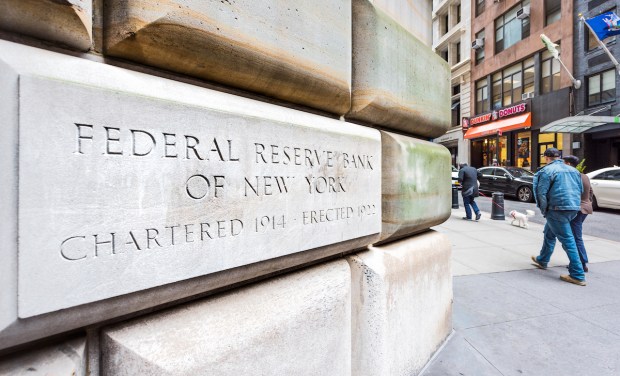NY Fed: Digital Dollar Could Improve Cross-Border Payments

The New York Federal Reserve said a digital dollar could improve cross-border and domestic payments.
That’s according to the results of a test by the Fed’s New York Innovation Center (NYIC) that examined the feasibility of running an interoperable network — known as a regulated liability network (RLN) — for central bank and commercial digital currencies on a shared ledger, according to a Thursday (July 6) press release.
“From a central banking perspective, the proof of concept was conducive to exploring tokenized regulated deposits and understanding the potential functional benefits of central bank and commercial bank digital money operating together on a shared ledger,” New York Innovation Center Director Per von Zelowitz said in the release.
Joining the Fed in the program were several banking giants, including TD Bank, Wells Fargo, HSBC and Citigroup, Cointelegraph reported.
At the time the 12-week trial was announced last year, Jon Prendergast, the head of U.S. Payments Strategy at TD Bank, told PYMNTS the project “has the potential to be a watershed moment in the use of distributed ledger technology (DLT) within the regulated banking industry.”
The study did not identify “any insuperable legal impediments under existing U.S. legal frameworks that would prevent the establishment of an RLN system,” according to the release, although further studies and discussions with regulators are still needed.
Despite the findings, the idea of a central bank digital currency (CBDC) in the U.S. remains a long way off, with Fed officials and presidential candidates on both sides of the aisle expressing doubts about the digital dollar.
Sen. Ted Cruz of Texas has gone as far as to introduce legislation to ban CBDCs in the United States.
Doubts about digital currencies persist even in countries that are farther along in their projects, such as China and India.
Meanwhile, the European Central Bank (ECB) is expected to decide in October whether to push ahead with a retail digital euro.
Last week, the European Commission published two proposals designed to ensure consumers and businesses can continue to use paper currency, while also creating the framework for an electronic version of the euro.
For all PYMNTS crypto coverage, subscribe to the daily Crypto Newsletter.

